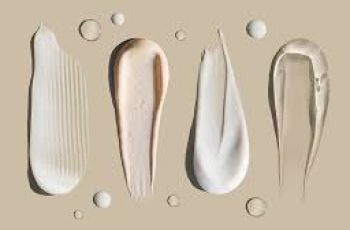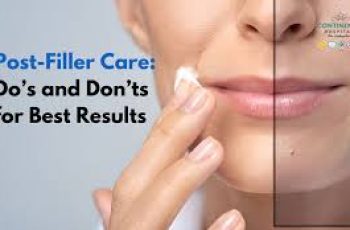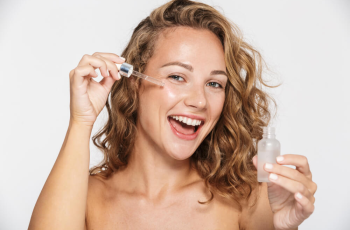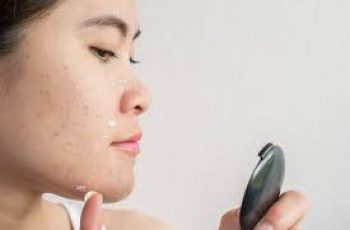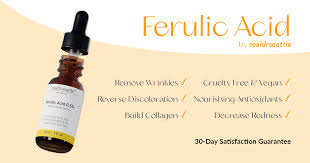
.webp)
.webp)
.webp)
Ferulic Acid in Skin Care: The Ultimate Guide to Its Benefits and Uses
.webp)
.webp)
Ferulic acid is a powerful natural compound prized in skin care for its antioxidant, anticarcinogenic, and photoprotective properties.
.webp)
.webp)
.webp)
It’s a key ingredient in many serums and sunscreens, designed to shield skin from UV damage.
.webp)
.webp)
In this article, you’ll discover everything about ferulic acid, from its natural sources to its chemistry and how it can transform your skin care routine.
.webp)
.webp)
.webp)
What Is Ferulic Acid?
.webp)
.webp)
Ferulic acid, chemically known as 4-hydroxy-3-methoxycinnamic acid, is a plant-based compound that makes up part of the cell walls in many fruits and vegetables.
.webp)
.webp)
.webp)
It belongs to the hydroxycinnamic acid family, a group of polyphenolic compounds common in nature.
.webp)
.webp)
These compounds are renowned for their antioxidant activity, which helps protect plants—and your skin—from damage caused by free radicals.
.webp)
.webp)
.webp)
Humans consume ferulic acid daily through diets rich in fruits and vegetables. This widespread presence explains why eating plants is so beneficial for overall health.
.webp)
.webp)
Ferulic acid’s antioxidant power is one of the many reasons vegetables promote longevity and skin health.
.webp)
.webp)
.webp)
Natural Sources of Ferulic Acid
.webp)
.webp)
Ferulic acid is naturally found in numerous common foods. It appears in fruits, grains, and vegetables such as:
.webp)
.webp)
.webp)
Asparagus, Barley, Eggplants, Grapes, Oats, Olives, Pineapples, Spinach, Tomatoes
.webp)
.webp)
Because it is often harvested as a byproduct of agriculture, ferulic acid is an inexpensive, readily available ingredient in many skin care formulations.
.webp)
.webp)
.webp)
The Chemistry Behind Ferulic Acid
.webp)
.webp)
Ferulic acid is part of the hydroxycinnamic acids family, along with compounds like caffeic acid, p-coumaric acid, and sinapic acid. These molecules share a polyphenolic structure, giving them strong antioxidant effects.
.webp)
.webp)
.webp)
Studies have shown ferulic acid’s ability to absorb ultraviolet (UV) radiation, particularly UVB rays responsible for sunburn and skin damage.
.webp)
.webp)
This UV-absorbing ability makes it an excellent photoprotective agent. It helps prevent erythema, the redness and inflammation caused by UVB exposure.
.webp)
.webp)
.webp)
The antioxidant power of ferulic acid comes from its chemical structure, which easily stabilizes harmful free radicals.
.webp)
.webp)
This reduces oxidative stress on skin cells, protecting membranes and supporting the skin’s barrier function.
.webp)
.webp)
.webp)
How Is Ferulic Acid Used in Skin Care?
.webp)
.webp)
Ferulic acid is primarily found in cosmetic creams, serums, and sunscreens designed to protect skin from sun damage.
.webp)
.webp)
.webp)
It’s often paired with other antioxidants like vitamins C and E, which help boost its effectiveness and improve product stability.
.webp)
.webp)
Besides protecting skin from UV rays, ferulic acid helps extend the shelf life of skin care products by preventing oxidation.
.webp)
.webp)
.webp)
Its dual role as a UV absorber and antioxidant makes it a star ingredient in many formulations targeting sun damage, hyperpigmentation, and aging.
.webp)
.webp)
Key Benefits of Ferulic Acid in Skin Care
.webp)
.webp)
.webp)
1. Antioxidant Protection
.webp)
.webp)
Ferulic acid neutralizes free radicals that cause oxidative stress, a major factor in premature skin aging and damage. This helps maintain healthy, youthful skin.
.webp)
.webp)
.webp)
2. UV Protection and Repair
.webp)
.webp)
Ferulic acid absorbs harmful UV radiation and reduces sunburn risk. It also aids in repairing skin damaged by sun exposure, improving skin tone and texture over time.
.webp)
.webp)
.webp)
3. Anti-Hyperpigmentation Effects
.webp)
.webp)
It acts as a tyrosinase inhibitor, meaning it slows down melanin production. This property makes ferulic acid an effective ingredient for treating hyperpigmentation, melasma, and post-inflammatory marks.
.webp)
.webp)
4. Supports Anti-Aging
By protecting against oxidative damage, ferulic acid helps reduce wrinkles and fine lines. It works well in synergy with retinoids and other anti-aging ingredients.
Ferulic Acid and Hyperpigmentation
Hyperpigmentation occurs when excess melanin forms patches of darkened skin. Ferulic acid’s role as a tyrosinase inhibitor makes it a potent treatment for this condition.
It is more effective than other natural compounds such as arbutin, kojic acid, and vitamin C in slowing melanin production.
Combining ferulic acid with other skin lightening agents or PAR-2 blockers can enhance its depigmentation effects.
For moisturizing layers, natural oils like bergamot, licorice extract, rose, and sunflower oil further support skin brightening.
Safety and Side Effects of Ferulic Acid
Ferulic acid is remarkably safe for topical and oral use. Since it is found abundantly in edible plants, it poses almost no risk of allergic reactions.
It is also safe for pregnant individuals because of its minimal systemic absorption when applied to the skin.
No significant toxicity has been reported with topical use, making ferulic acid a low-risk ingredient. Moreover, its production as an agricultural byproduct ensures a minimal environmental footprint.
Ferulic Acid Stability and Usage Tips
Ferulic acid’s effectiveness depends on formulation conditions, particularly temperature and pH. The optimal pH for ferulic acid’s stability and activity is about 6.
Using it with products that have a very low or very high pH can reduce its benefits.
For example, layering ferulic acid with a low pH product like glycolic acid can reduce its antioxidant capacity.
To maximize results, apply ferulic acid first, then follow with products that maintain or support a pH around 6 or higher.
Ferulic Acid in Combination With Other Ingredients
Ferulic acid pairs exceptionally well with vitamins C and E. This trio offers enhanced photoprotection, antioxidant defense, and anti-aging benefits.
Many advanced serums contain these ingredients together, leveraging their synergistic effects.
When used alongside retinoids, ferulic acid helps boost anti-aging results, while balancing pH ensures all ingredients remain effective.
Creating a well-rounded skin care routine that respects these factors will optimize your skin’s health.
Ferulic Acid Beyond Skin Care
Ongoing research explores ferulic acid’s potential benefits outside skin care, including its effects on cardiovascular health, diabetes, neurodegenerative diseases, and various cancers.
Although promising, more studies are needed to confirm these wider health claims.
Conclusion
Ferulic acid stands out as a potent natural antioxidant and UV-protective compound widely used in skin care.
Its ability to protect, repair, and brighten skin makes it an ideal ingredient for anyone concerned with sun damage, hyperpigmentation, and aging.
Safe and inexpensive, ferulic acid is a versatile addition to many cosmetic formulations.
By understanding how to use it properly—especially regarding pH and layering—you can maximize its benefits and enjoy healthier, more radiant skin.
Explore ferulic acid products to add a powerful boost to your skin care routine.
Whether you want to combat sun damage, lighten dark spots, or reduce wrinkles, ferulic acid is a scientifically backed ingredient worth trying.
